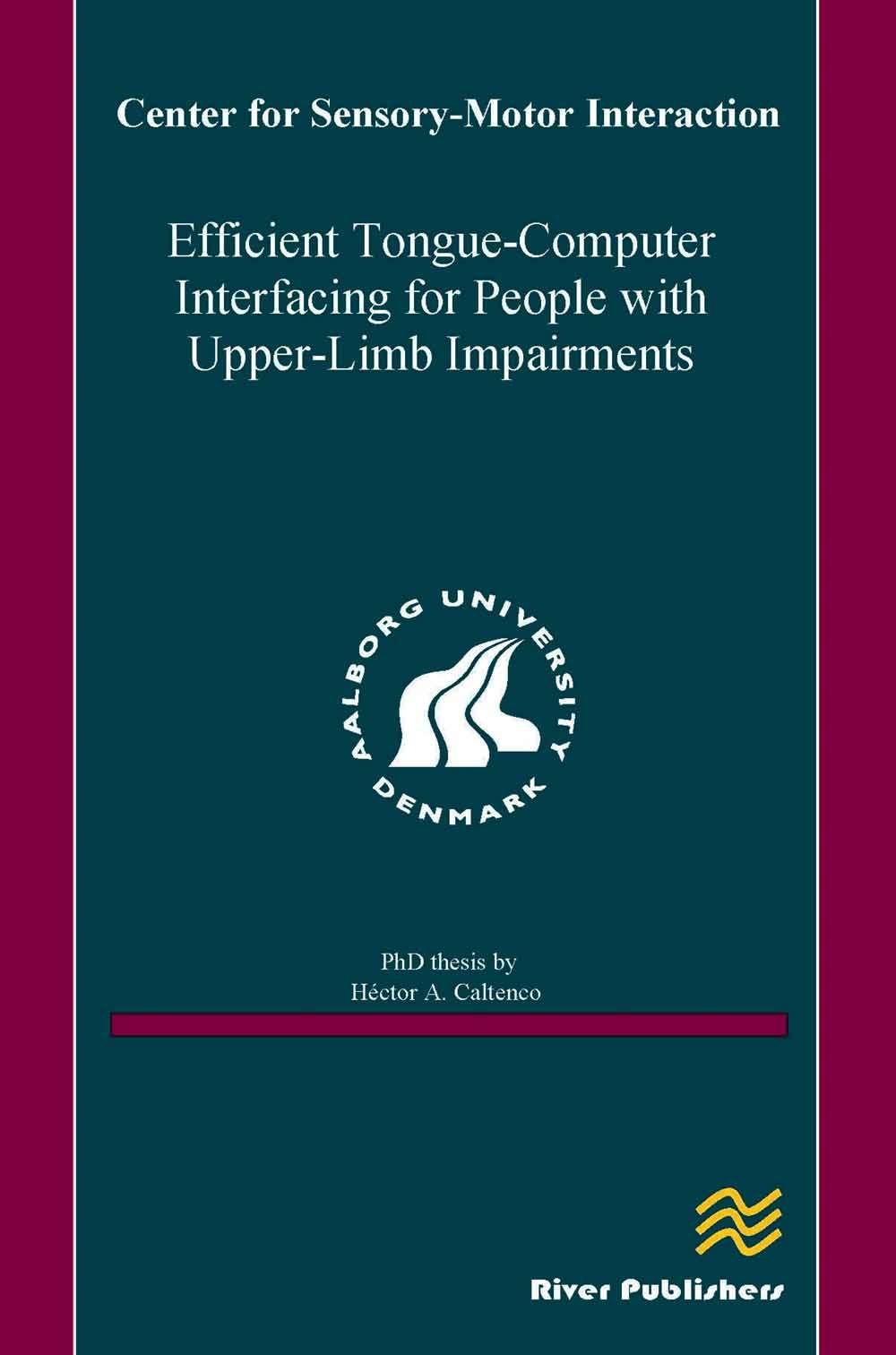River Publishers Series in
Efficient Tongue-Computer Interfacing for People with Upper-Limb Impairments
Author: Héctor A. Caltenco, Dept. of Health Science and Technology, Aalborg University
e-ISBN: 9788792329943
Available: December 2011
Efficient tongue-computer interfacing for people with upper-limb impairments is based on the work done at the Center for Sensory-Motor Interaction (SMI). The objectives was to research methods for designing an accurate and efficient tongue-computer interface, which would ensure sufficient degree of control and correct interpretation of the user's wishes. Result from these studies showed that tongue-computer interfacing is a feasible way for people with severe upper-limb impairments to control a personal computer. Tongue-computer interfacing methods that allow the user to effectuate fast and accurate commands were obtained using visual and auditory feedback techniques. These methods show promising results as an alternative text-input and mouse-pointer control method for individuals with severe physical disabilities. Motor learning evidence supports the notion that the tongue can rapidly learn the necessary motor to control personal computers using a tongue-computer interface.
The content is divided into 3 chapters. Chapter 1 comprises the introductory section, which provides background information on human-computer interaction and computer interfaces for people with upper-limb mobility impairments. It also presents state of the art methods on tongue-computer interfacing and the tongue control system used for these studies. Chapters 2 summarizes the specific aims, methodology and main results of the five studies performed during the research. Chapter 3 presents the closing statements, including general discussion, future work and conclusion. The report contains two appendices in which technical information of design aspects that complements this work but has not been published is presented.
